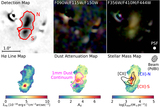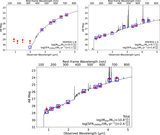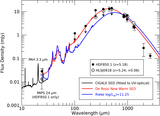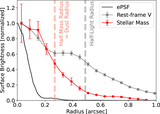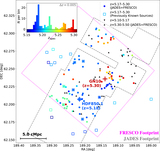Image Details
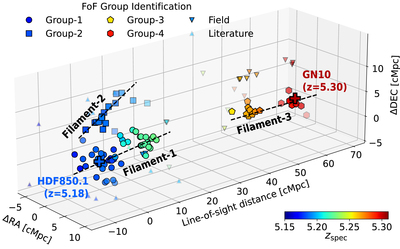
Caption: Figure 11.
3D large-scale structure of the overdense environment in the GOODS-N field at z = 5.17–5.30. Coordinates of galaxies are with respect to that of HDF850.1 in units of comoving Mpc. All galaxies are color-coded by their redshifts, and galaxies in less dense regions (suggested by Gaussian kernel density estimation) are shown as transparent symbols. Spectroscopically confirmed galaxies in Walter et al. (2012), Calvi et al. (2021) that are not part of our sample are denoted as upward triangles. Through our clustering analysis, we identify four galaxy groups in the overdensities, potentially consisting of three filamentary structures over a volume of 16 × 18 × 64 cMpc3. The massive SMGs HDF850.1 and GN10 (shown as colored plus signs) reside in our proposed Filament-1 and -3, respectively.
Copyright and Terms & Conditions
© 2024. The Author(s). Published by the American Astronomical Society.



